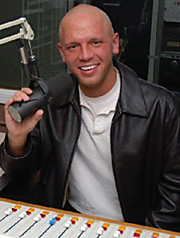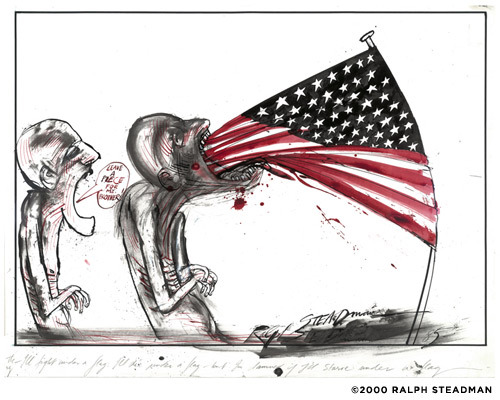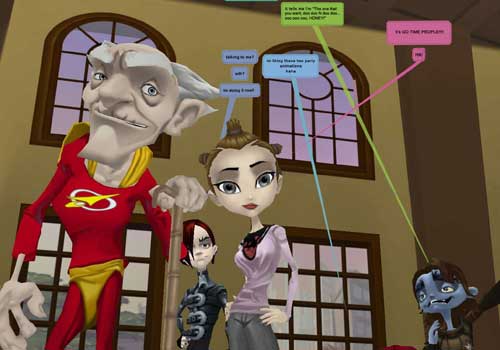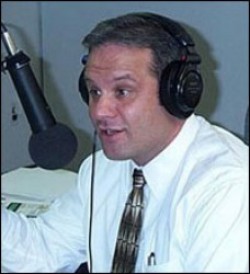Alex Constantine - March 8, 2010
by: R.V. Murphy | www.realchangenews.org
How do they solve a problem like a liberal? Eliminate him
 The Eliminationists: How Hate Talk Radicalized the American Right
The Eliminationists: How Hate Talk Radicalized the American Right
By David Neiwert, PoliPoint Press, soft cover, 2009, 249 pages, $16.95
There’s a great irony to David Neiwert’s new book “The Eliminationists: How Hate Talk Radicalized the American Right.” While a lot of the book reads like columns culled from Neiwert’s blog, “Orcinus” (going all the way back to the Bill Clinton administration), it’s more topical than ever.
Neiwert begins with Jim David Adkisson. In July 2008, Adkisson walked into the Tennessee Valley Unitarian Universalist Church in Knoxville, shot and killed two parishoners and wounded seven others as services were about to begin. In the following months, after Neiwert’s book went to press, there were three more shootings that had the earmarks of right-wing extremism: James von Brunn, an 88-year-old white supremacist killed Stephen Johns, a guard at the U.S. Holocaust Museum in Washington, D.C. (von Brunn, who suffered a head injury during the shooting, died Jan. 7); Richard Poplawski, a 22-year-old former Marine, killed three Pittsburgh policemen and injured two more with an AK47 after hearing TV host Glenn Beck and National Rifle Association head Wayne LaPierre talk about how President Barack Obama was going to ban guns; and anti-abortion advocate Scott Roeder shot Dr. George Teller, one of the few doctors performing late-term abortions, at a church in Kansas where Teller served as an usher (on Jan. 29, Roeder, who admitted to a jury he’d shot Teller, was convicted of first-degree murder; he’ll serve life in prison).
These are the most extreme examples of what Neiwert calls eliminationism: “a politics and a culture that shuns dialogue and the democratic exchange of ideas in favor of the outright elimination of the opposing side through suppression, exile, ejection or extermination.’’
While some would say these are isolated incidents and the acts of unbalanced people, Neiwert makes the argument that, “The line between right-wing extremists and ‘the conservative movement’ has been increasingly blurred in the past 10 years, so blurred in fact, there are times the two are nearly indistinguishable.’’
Neiwert has reported on right-wing extremist groups since the 1980s. Currently a Seattle resident, he grew up in Idaho where, he writes, “If you couldn’t make friends with conservatives, you didn’t have many friends.’’ When Neiwert grew up in the ’60s Idaho had a curious mix of John Birchers and Mormons; as a reporter in the early ’90s he started writing about the “Christian Patriot movement’’ or, as it’s better known, the militia movement, and the Aryan Nations, who made no secret of their Hitler worship, swastikas and hatred of Jews and blacks.
“The kind of ideology being promoted by the (Montana) Freemen was a blind, irrational, utterly visceral hatred that surpassed even the worst things I had heard from the mouths of Birchers while growing up,’’ Niewert wrote in 1996 while covering one militia trial. “There were paranoid conspiracy theories, pseudo-legal “constitutionalism,’’ even the barely concealed race-baiting and anti-Semitism.’’
At the same time, Neiwert began listening to radio talk-show host Rush Limbaugh and heard the same messages as the militia and the Aryans, albeit in a more articulate (and entertaining) manner. “Americans were being told, relentlessly and repeatedly, that government was not only a bad thing but inherently evil,’’ writes Neiwert. “Government was conspiring to take away their freedoms and enslave them.’’ This part of the book is must reading for progressives wh don’t understand middle-Americans who think health care is “taking away’’ their freedoms.
Limbaugh paved the way for a generation of right-wing talk show hosts, personalities and bloggers (not to mention an entire TV network: FOX News) who marginalize and belittle those they disagree with. (A couple of things that Neiwert doesn’t bring up are the roles that the abolition, in 1987, of the FCC’s Fairness Doctrine, which asked broadcasters to present controversial issues in a balanced manner, and the increasing concentration of media ownership play in the rise of the right-wing media).
After Adkisson was arrested, police detectives entered his home and found, spread among his guns and ammunition, the latest conservative prose stylings: “Liberalism Is A Mental Disorder” by Michael Savage (who lost a Saturday night show on MSNBC when he told a gay caller, “You should get AIDS and die, you pig.’’), “Let Freedom Ring” by Sean Hannity and Bill O’Reilly’s “The O’Reilly Factor.”
The rise of the Radical Right coincided with the Clinton presidency. “(The bashing) culminated in the Clinton impeachment fiasco, which demonstrated the power of an increasingly fanatical movement to foist its political power on an unwilling public,’’ writes Neiwert.
When Clinton left office, right-wing baiting was accelerated by three issues: the 9/11 attacks and the War on Terror (which Neiwert connects), immigration and the invasion of Iraq. “In all three cases, the demonization of liberals grew sharper and louder, as did the reflexive reliance on conspiracy theories and apocalyptic fear mongering.”
Neiwert finishes the book on a cautionary note. Paraphrasing Sinclair Lewis, he says that fascism could happen here (despite cries from both the Right and Left that the U.S. is hardly a fascist country today), but doesn’t give any concrete suggestions on how to avoid it. Neiwert suggests confronting the Right directly but not sinking to its level.
In a nutshell, that may be the progressive paradox.
http://www.realchangenews.org/index.php/site/archives/3796/










Sorry I even clicked here.